The Amateur Mycologist - Puerto Varas - Part 1
These posts are not for foraging. They are intended for entertainment and intellectual satisfaction only. These posts are not a field guide nor comprehensive in any way - their accuracy is not assured in any way. Do not eat wild mushrooms unless you are a professional, have substantial professional assistance or have a wealth of personal experience with a specific species. Do not make any foraging decisions based on these posts. To do so could be dangerous or life threatening.
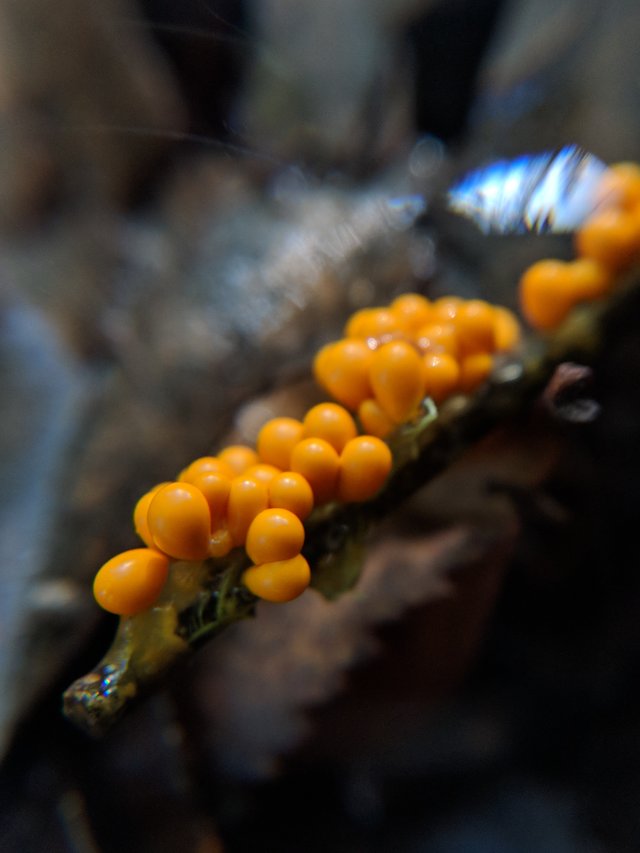
I'm having a funny problem in writing these post-Chile blogs about which picture to put first
This is a blog about fungi and slimemolds, and so it makes sense to place those organisms up front. In the end, obviously, I decided to do just that, hence the beautiful, bizarre macro photo above of what is likely a Hemitrichia clavata myxomycete making super fresh sporangia.
Now I think that photo is blockbuster, if you're into this sort of thing, and it hopefully draws in my niche of reader who, I imagine wants to see some of the weird organisms Chile had to offer.
But then I have photos like this.
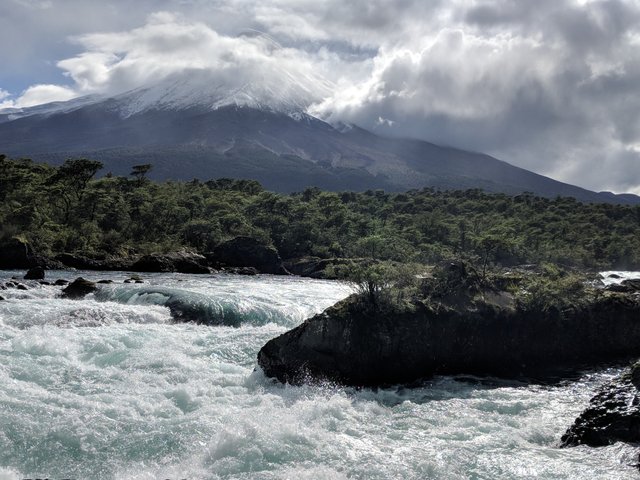
The majestic Saltos del Petrohue
I mean, come on. How awesome does this place look? The roiling froth of the rapids, the small islands of verdant rock, the lush forest in the background and, dominating over it all, the powerful cone of the volcano lost in what looks like God's own oil painting of a magnificent cloudscape.
This was my Chilean experience in a nutshell - come for the fungus, end up overwhelmed by monumental natural beauty.
The area photographed here, specifically the pathed forest in the park leading up to the waterfalls proper, is where all of the mushrooms featured today were found. Our foray here was not the most successful, but as always we found some awesome stuff.
First, let's get back to that slime mold.
.jpg)
Frequent readers will remember that slime mold are NOT fungi.
Rather they are a seperate type of organism entirely, harkening from countless millions of years ago. The slime mold begins life as individual cells and, in the case of plasmodial slimemolds, eventually all those cells amass into one homogenous entity called a plasmodium.
The photos you see here are instructive regarding the life cycle of a plasmodial slime mold. First, this zoomed out photo gives you a sense of the scale we're talking about as you can use my thumb as a reference point. The fruiting bodies of this particular slime mold are not very big.
Second, if you look at the top photo in this post more carefully, you can actually make out the remains of the plasmodium at the base of the sporangia - it's all that goop down there. Happily, we caught this slimemold mid transformation and the new sporangia are still glossy and perfectly plump and smooth.
Here's another photo that really shows the tendrils of plasmodium acting as stipes to the sporangia.
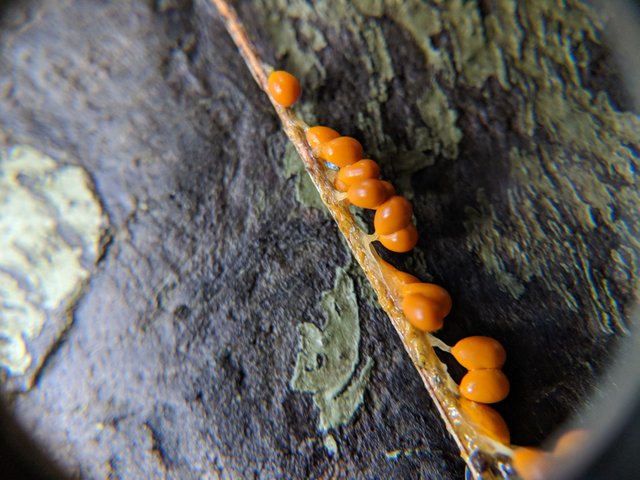
The transformation of plasmodial slime into concrete structures is well highlighted here.
For my money, slimemolds are some of the strangest organisms on Earth. More than anything I've come across they really feel like lifeforms feom another planet, and photos lile this really drive that feeling home.
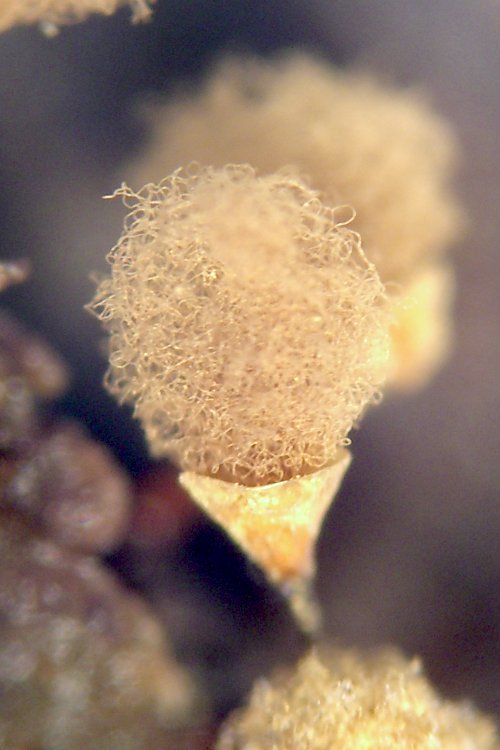
In time, those perfect yellow droplets will have darkened and the spores inside them will have matured. Alongside those spores capillitium will form - long wiry tendrils of material, often with minute microscopic spirals or spikes. The spores and the capillitium intermingle and, eventually, the sporangia opens to reveal them, as seen in the photo to the left. When that bundle of capillitium is disturbed it will send a plume of spores into the air.
We have actually seen a yellow Trichia or Hemitrichia species before on this blog, including some awesome microscopic photos of the bright yellow capillitium and some spores.
It is important to note two things here:
Although this specimen seems to fit the bill of Hemitrichia clavata, of course I can't be 100% certain of that ID.
Although I can't be 100% certain of that ID, it is nonetheless plausible that the species pictured here is found literally all over the world. Presumably their millions and millions of years on Earth have given slimemolds enough time to get literally everywhere, and as a result the species are mostly considered cosmopolitan - which is to say found all over the globe.
For my money, this Myxo was my favorite overall find on this foray, but it was far from the only one.
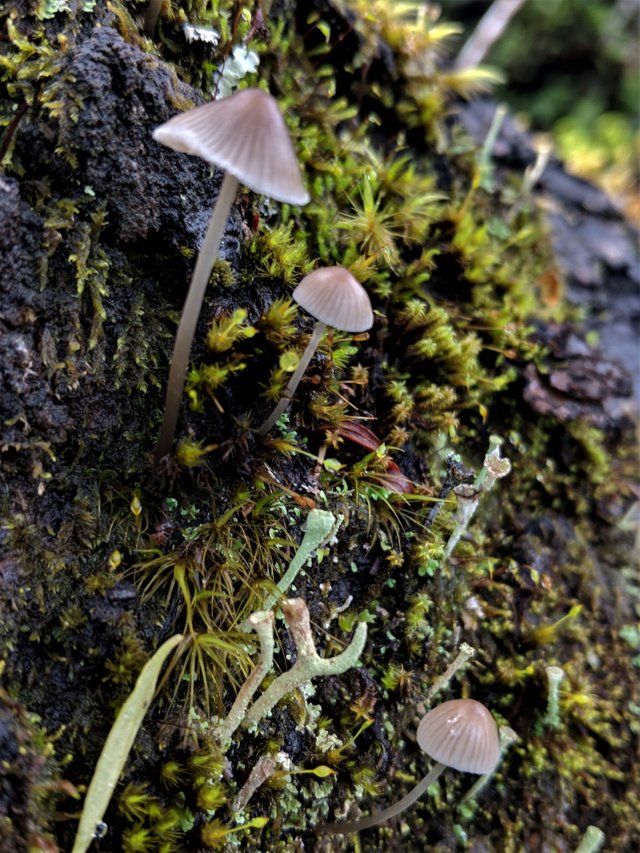
Some, like these Mycena, are not obviously identifiable by photograph.
This small genus of mushrooms appears all over the place - in Chile and everywhere else for that matter. The genus is known for its small size, delicate structures and often vibrant colorations. In general, for the average mushroom collector most Mycena species are considered too inscrutable to identify and therefore not a great deal of interest is paid to the genus, even among those who enjoy learning about mushrooms.
However, as with most complex things it turns out taking a deeper look reveals a pattern in the complexity, and with the right resources, even apparently obscure Mycena mushrooms can in fact be identified.
This particular species remains anonymous to me, but as we continue travelling in Chile, and indeed upon my return home, other Mycena will reveal their identities more readily.
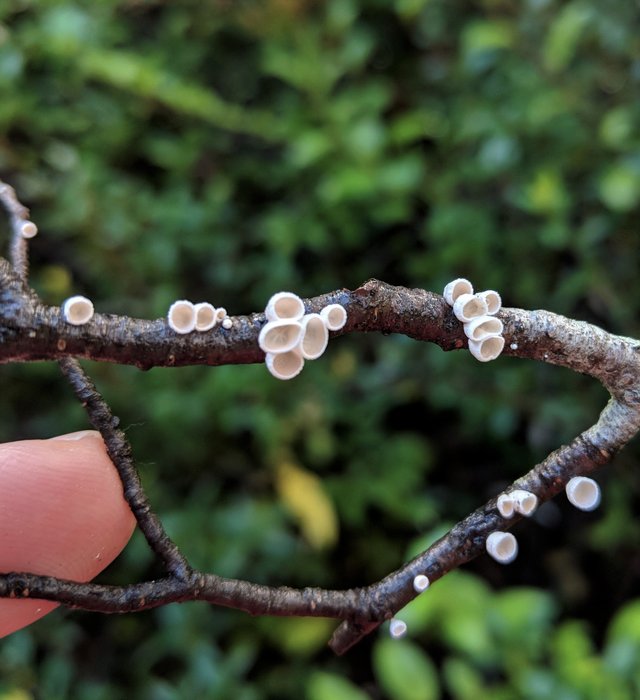
These Cytidia mushrooms, possibly C.flocculenta, are cup looking fungi with a rudimentary wrinkly gill structure at the inside base of their cups.
If you zoom in you can see the wrinkles I'm referring to, as well as the floccose looking texture around the exterior of the cups which hints at the possibility that this is flocculenta.
As a good example of the sometimes cavernous morphological differences even within a genus, consider this next fella, also probably a Cytidia species.
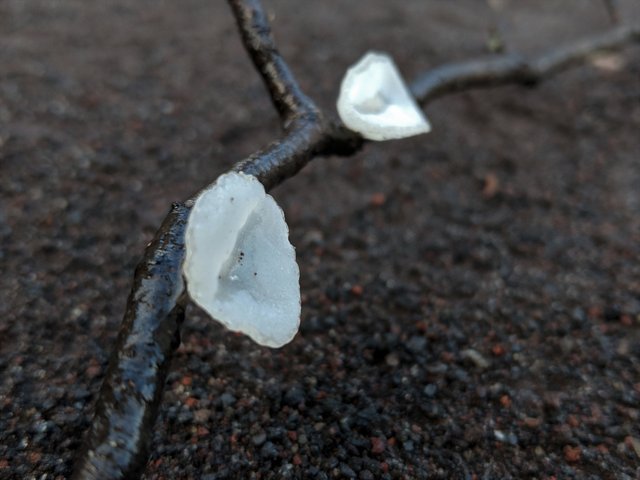
Sure both of those species are saprobic, growing on wood, but could they look more different?
Yet one of the compatriots on this journey who I trust quite completely, and whose renowned mycological knowledge is far more expansive than my own, indicates that both of these are likely Cytidia, and so I am inclined to believe her.
Keep in mind, this is not fundamentally hard to believe, as morphological variation within a genus are not at all unheard of and can run the gamut. Indeed, next post we will talk about a Cortinarius mushroom that pushes the limit of this phenomenon and the collective images of Cortinarius mushrooms throughout these Chile posts will more than illustrate what I'm talking about.
A wide variety saprobic mushrooms were thriving all over Chile and they came in a beautiful array of colors and structures, for instance the red beauty below.
.jpg)
Anthracophyllum discolor looks like a perfect little seashell growing off a piece of wood.
These guys were everywhere in Chile and we found them several times. They are basidiomycetes and release their spores from the underside, although they don't have a traditional gill structure exactly
More conventional looking saprobes popped up now and again.
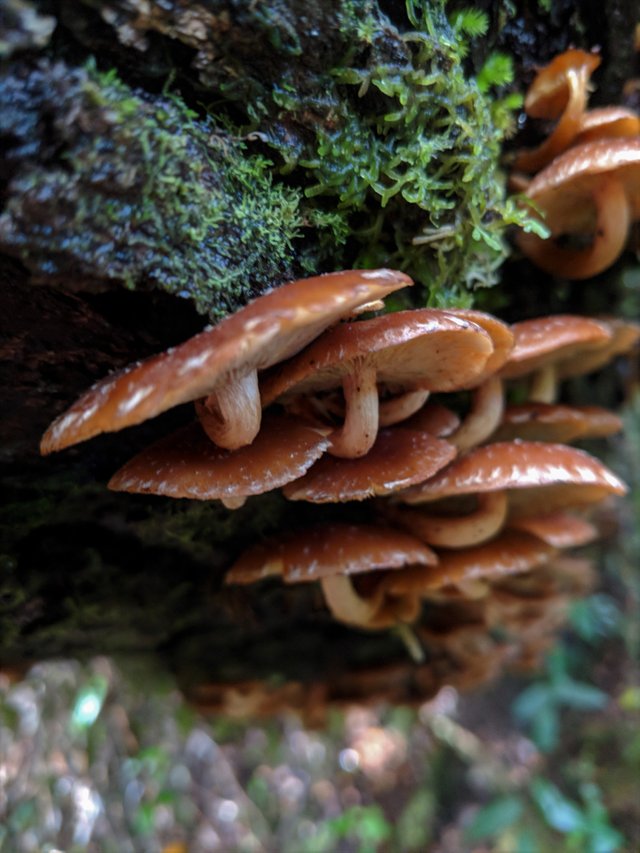
Take these likely Hypholomas, a genus we have encountered before on the blog
Again, I would never intuit that these were Hypholomas, but that is the word from on high regarding the lilely genus. A spore print could be telling in this regard, but when you're collecting hundreds of mushrooms over the course of a few days you end up cutting some corners.
One recurrent visual theme throughout the trip was the coral or coral-like fungi. We've already seen a bright apricot colored Ramaria, but now take a look at these little guys.
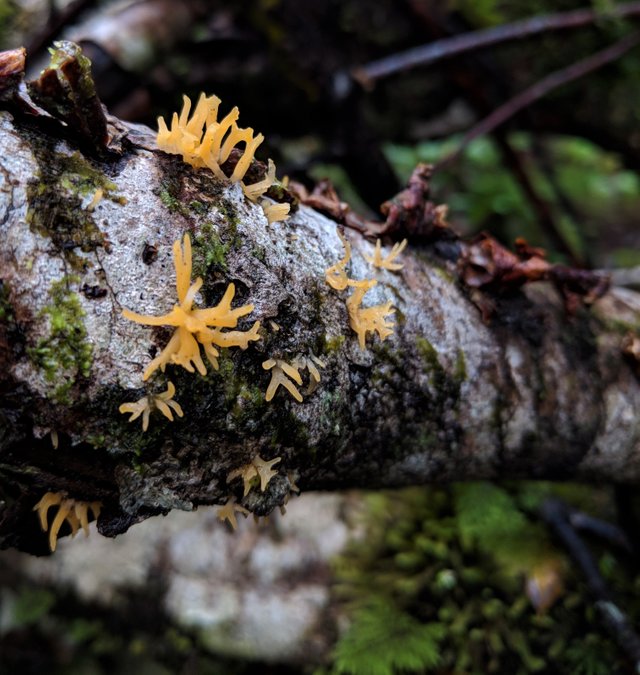
Calocera cornea was absolutely widespread, sprouting on old wet wood in every park, all across the country.
It was one of those mushrooms you first wonder at and then get so used to it might as well be invisible. And yet the fruting bodies are quite beautiful and vibrantly yellow.
Guliana indicated that actually the Calocera species can deviate, one from another, dependent on whether they fork at the ends of not - or perhaps the extent to which they fork? - I can't quite remember.
But they look exactly like the photo in her guide and others have confirmed photographic IDs online, so I'm pretty confident.
What's interesting about these compared to Ramaria fungi is that although they appear to be coral like, Calocera is really a jelly fungus. It is also a basidiomycete however, with the mature surface being all along the sides of the fruiting body which then launch spores from basidia.
Finally, although it isn't a fungus, special mention must be made of a certain delivious berry endemic to the southern Chilean countryside - Murta!
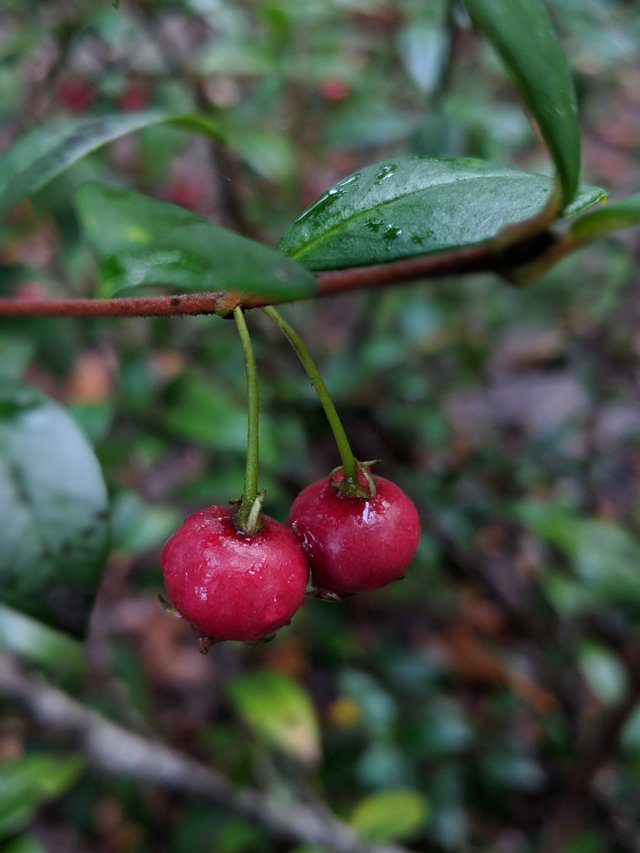
Look at those succulent morsels!
I am not, as any reader will know, a big fan of eating wild foods, which is counter intuitive given my growing knowledge of edible fungi, but becomes intuitive again once you meet me and realize I'm a hypochondriac.
However, if there is any one thing that can convert me to a dyed in the wool, if ad hoc, forager it is confident local knowledge. Several times over the course of this trip I was lucky enough to meet people who knew certain edible wild species very well and under whose guidance I felt comfortable indulging.
Murta was the star of the show in this regard. The small red berry, scientific name Ugni molinae, grows in gigantic quantities in and around the Chilean forests of the mid south. We were introduced to then while visiting the falls and for the rest of the trip all of us could be seen harvesting the effectively limitless supply of them by the handful.
The berries are bright red when ripe and have a distinctive starburst shape on their bottoms. Most importantly they taste enchanting. Murta has a very specific flavor quite unlike any berry I've ever had. They are sweet, maybe a touch of tartness, but then there is an aftertaste that I described as a hint of the beginning flavor of cinnamon, but without the burn of cinnamon. It is a remarkable flavor and one which is prized in Chile and frequently found in stores as jam and ice cream.
Of course, far be it from me to tell anyone they should eat a wild berry, but if you can confirm the ID with someone who knows, even just once, then you should be set to go wild if your in a Chilean forest at the start of fall.
Next time we cover a very unique species of Cortinarius, quite unlike any I'd ever seen.
All Photos Are My Own Except:
[Photo 5]By Jason Hollinger (Flickr: Yellow Fuzz Cone Slime) [CC BY 2.0 (https://creativecommons.org/licenses/by/2.0)], via Wikimedia Commons
Information Sources:
- Primary sources were several of the mycologists I went on the trip on in this case, whose photos and identifications I had access to in preparing this post.
- Giuliana Furci, Hongos De Chile, Volume I, Reimpresion corregida 2016; p.130;p.138;
- Hidden Forest on Hemitrichia clavata
- Wikipedia on Hemitrichia
- Wikipedia on Anthracophyllum
- Kuo, M. (2008, November). Calocera cornea. Retrieved from the MushroomExpert.Com Web site
- Wikipedia on Ugni molinae, "Murtas"
- If you want to plan a visit, here's Saltos del Petrohue on Tripadvisor
Please support @Steemstem and the #Steemstem community, dedicated to bringing and supporting high quality STEM related content on Steemit.
Let me clarify what I mean by "support." There are a number of good options.
Head over to the steemstem discord channel and the #steemstem tag and start talking with the other users involved in the community, commenting and upvoting on their submissions.
If, like me, you can hardly find time to post your own material once a week, then consider joining the steemstem autovote trail, which you can inquire about on said discord channel.
Or, if, like me, time is very difficult to give to the community, then consider making a delegation. Presently, and for the last half year, I have delegated a third of my SP to the @steemstem account.
Wow amazing photos I just uoloaded mine photo and felt proud of my colourful photo but against your photos my photo is nothing.
Hi @dber!
Your post was upvoted by utopian.io in cooperation with steemstem - supporting knowledge, innovation and technological advancement on the Steem Blockchain.
Contribute to Open Source with utopian.io
Learn how to contribute on our website and join the new open source economy.
Want to chat? Join the Utopian Community on Discord https://discord.gg/h52nFrV
To listen to the audio version of this article click on the play image.

Brought to you by @tts. If you find it useful please consider upvoting this reply.
Fungi are among the most interesting and beautiful creatures. Did you know they are genetically closer to animals than to plants? Growth on very specific substrates is also an important property...for identification and for practical applications.
I certainly agree - and certainly growth medium is one of any number of important distinguishing characteristics
I understand that certain mushrooms (or other fungi) are specific to a particular species of tree to produce the rotting wood. For example, beech trees harbor specific mushrooms or "club fungi" or "dead man's fingers."
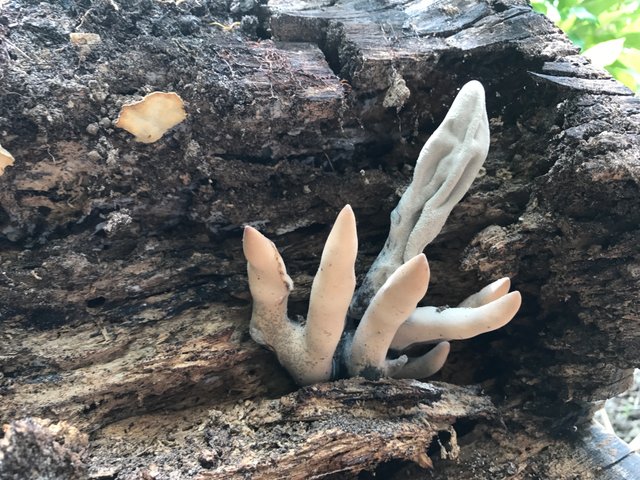
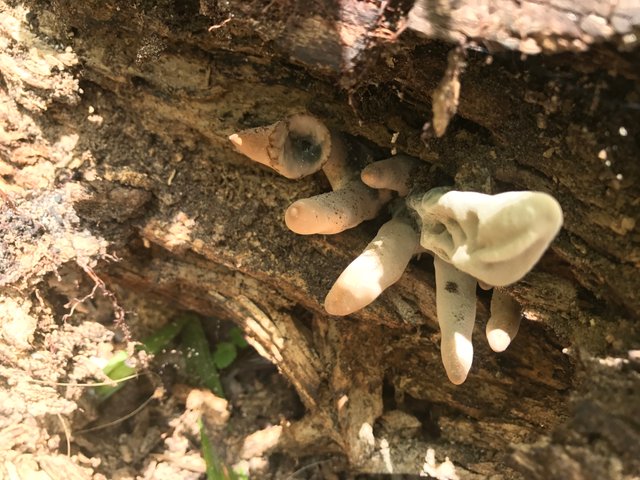
(Source: iPhone 7S photos by @qiyi)
Absolutely, I have some cool photos of a couple of Xylaria species coming up soon!
Hey @qiyi
Here's a tip for your valuable feedback! @Utopian-io loves and incentivises informative comments.
Contributing on Utopian
Learn how to contribute on our website.
Want to chat? Join us on Discord https://discord.gg/h52nFrV.
Vote for Utopian Witness!
wow @dber there is so much in this post, I don't know where to start, I can only imagine how it was for you discovering all these beauties. that first photo is awesome. The yellow slime mold are quite something but then all the fungi, the red saprobic mushroom is beautiful. Thanks for sharing all your findings and your adventures.
Thanks @trucklife-family - I certainly brought back a lot of awesome photos and info from my time in Chile, so I've been trying to get it all down without either posting too often or making the posts too voluminous. Lot's more pictures where this came from, and actually many of them are even more beautiful imo
Amazing!
Hey dber very nice and informative post. I wanna be your friend/supporter/upvoter and hope your kind support and upvote as well.